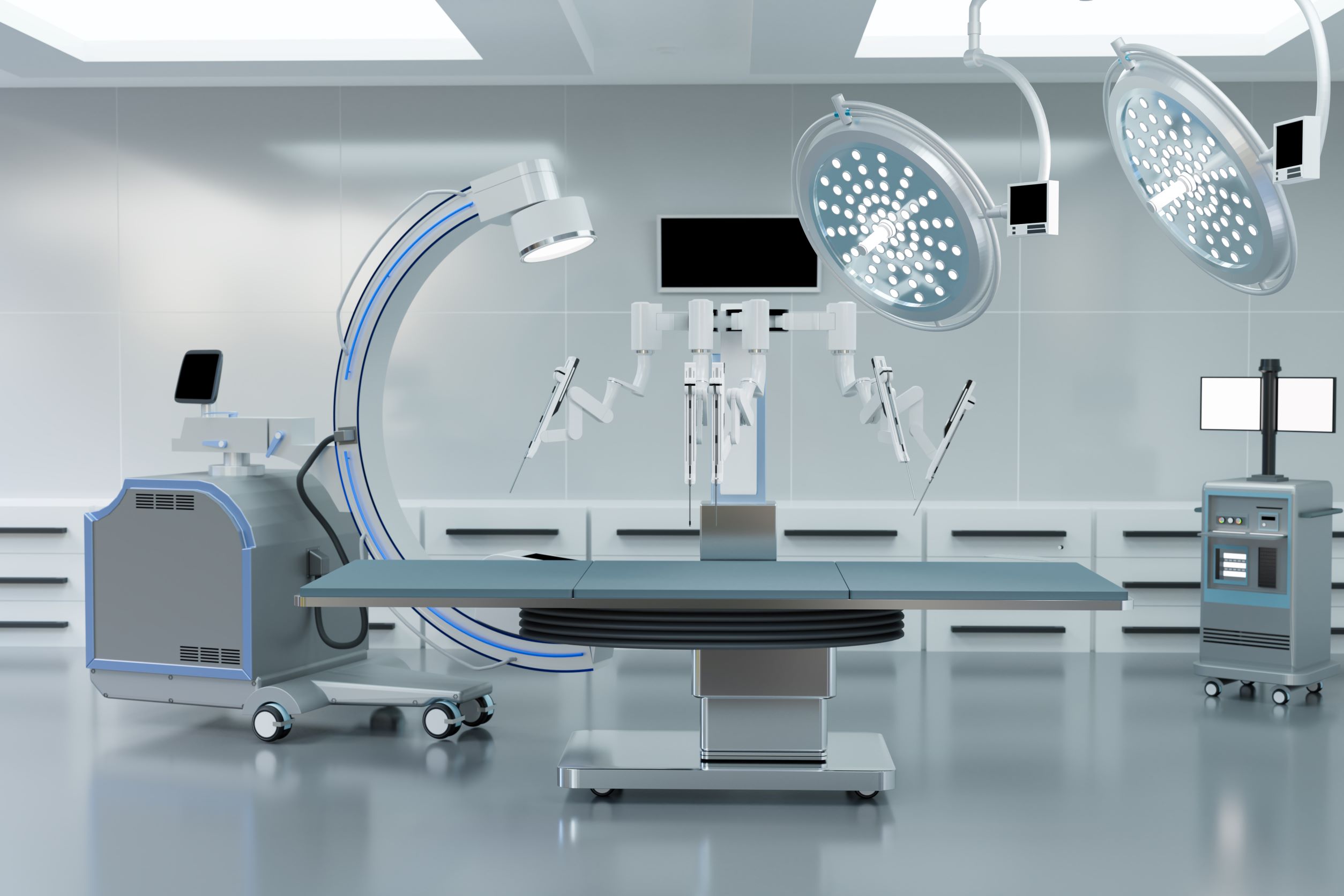Imagine a world where a surgeon in New York can operate on a patient in rural Africa, all from the comfort of their own operating room. This is the future of healthcare, and it’s called telesurgery. With the advent of new technologies and advancements in robotics, telesurgery is revolutionizing the way we think about healthcare and surgical procedures. But it’s not just about the technology, it’s about who owns the intellectual space. Whoever controls the patents, technologies, and knowledge in this field will be the ones to shape the future of healthcare as we know it. Are you ready to be a part of this revolution?
The field of telesurgery is advancing rapidly, and there are several key technology areas that are critical from an intellectual property (IP) perspective. These include:
- Robotics
- Communications
- Artificial Intelligence and Machine Learning
- Data Management and Security
One of the most important is robotics. The use of robotic surgical systems allows for greater precision and control in remote procedures, and companies that hold patents and proprietary technology in this area will have a significant advantage.
Another critical area is communication technology. In order for telesurgery to be successful, there must be a seamless and secure connection between the surgeon and the patient. Companies that hold patents and proprietary technology in areas such as 5G, internet of things (IoT), and virtual reality (VR) will be well-positioned to shape the future of telesurgery.
Artificial intelligence (AI) and machine learning (ML) are also key technology areas in telesurgery. These technologies can be used to analyze patient data and assist surgeons in making decisions, and companies that hold patents and proprietary technology in this area will be at the forefront of this revolutionary field.
Finally, data management and security are crucial technology areas in telesurgery. With the amount of sensitive patient data being exchanged, it is crucial that this data is properly managed and kept secure. Companies that hold patents and proprietary technology in areas such as data encryption and cloud storage will be well-positioned to shape the future of telesurgery.
Each of these areas plays a crucial role in the success of telesurgery and companies that hold patents and proprietary technology in these areas will be well-positioned to shape the future of healthcare. Let’s take a deeper dive into each of these technology areas and explore how they are transforming the field of telesurgery.
Robotic Technology for Telesurgery
Robotics is one of the most important technology areas in telesurgery, as the use of robotic surgical systems allows for greater precision and control in remote procedures. There are several major players in the field of robotic telesurgery, each with their own patent strategies to enhance their value.
One of the leading companies in robotic telesurgery is Intuitive Surgical, which is known for its da Vinci surgical system. This system is used in a wide range of procedures, from general surgery to gynecology and urology. Intuitive Surgical holds a large number of patents related to its da Vinci system, including patents for its surgical instruments and control systems. This patent portfolio allows the company to maintain a competitive advantage in the marketplace.
Another major player in robotic telesurgery is TransEnterix, which has developed a robotic surgical system called the Senhance. This system uses haptic feedback technology to provide surgeons with a sense of touch during remote procedures. TransEnterix has a strong patent portfolio in this area, which helps to protect its technology and maintain a competitive advantage.
Other notable companies in the field of robotic telesurgery include Medtronic, Stryker, and Veracyte. Each of these companies also holds a number of patents related to their technology and uses them to enhance their value in the market.

In terms of future research and valuable intellectual property, areas of interest include the development of smaller and more portable robotic surgical systems, as well as the integration of AI and machine learning technology into robotic surgical systems to improve accuracy and efficiency. Additionally, there is a growing interest in developing robotic systems that can be controlled by non-experts, such as nurses or other healthcare professionals, to increase access to surgery in remote or underserved areas.
Communications in Telesurgery
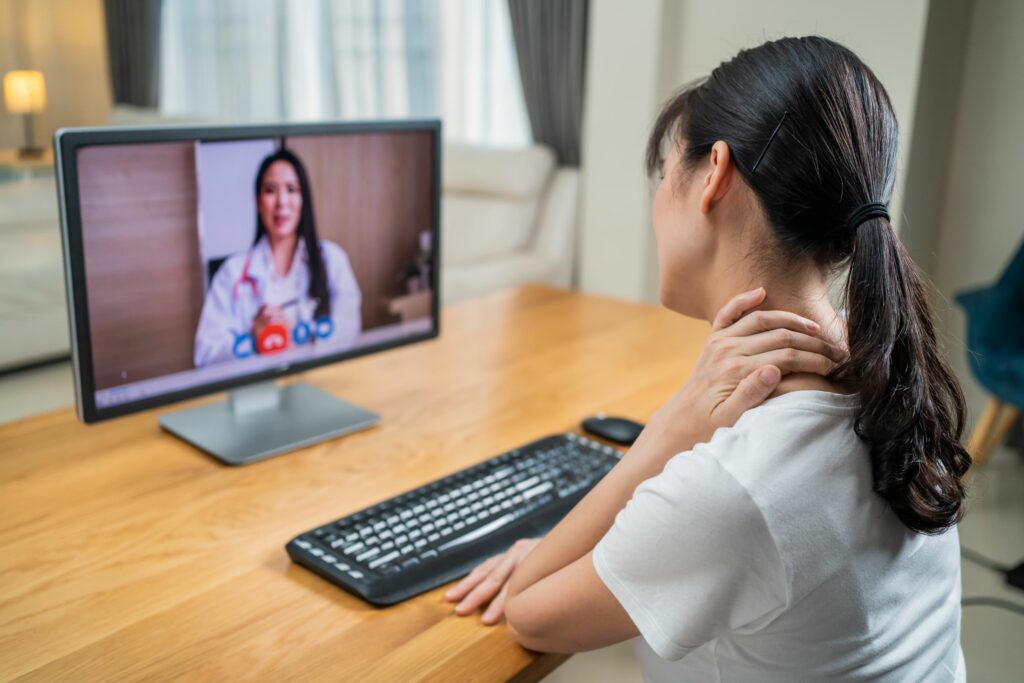
Communication technology is another critical area in telesurgery, as a seamless and secure connection between the surgeon and the patient is crucial for the success of remote procedures. The communication market has consistently been a major battleground for intellectual property, with many multi-billion dollar patent litigations taking place.
One of the major players in the field of communication technology for telesurgery is Cisco Systems. The company has developed a range of products and solutions for telemedicine, including its TelePresence system, which allows for high-definition video conferencing between remote locations. Cisco holds a large number of patents related to its TelePresence technology, as well as its other communication products and solutions.
Another major player in the field of communication technology for telesurgery is Nokia. The company is a leader in 5G technology, which is critical for the high-bandwidth and low-latency connections needed for telesurgery. Nokia holds a large number of patents related to 5G technology, and has been involved in several high-profile patent litigations in this area.
Other notable companies in the field of communication technology for telesurgery include Ericsson, Huawei, and Qualcomm. These companies also hold a number of patents related to their communication technology and have been involved in patent litigations as well.
In terms of future research and valuable intellectual property, areas of interest include the development of even faster and more secure communication technologies, such as 6G and beyond, as well as the integration of AI and machine learning technology to improve the performance and security of communication networks. Additionally, there is a growing interest in developing communication technologies specifically tailored to the unique requirements of telesurgery, such as ultra-low latency and ultra-high reliability.
Artificial Intelligence and Machine Learning will Transform Healthcare and Telesurgery
Artificial intelligence (AI) and machine learning (ML) are key technology areas in telesurgery, as these technologies can be used to analyze patient data and assist surgeons in making decisions. The healthcare space is currently undergoing a major transformation due to the integration of AI and ML, and telesurgery is no exception.
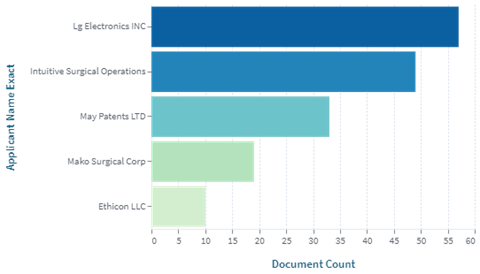
One of the major players in the field of AI and ML for telesurgery is NVIDIA. The company has developed a range of AI and ML technologies, including its Clara platform, which is specifically designed for healthcare applications. NVIDIA’s Clara platform allows for the development of AI-powered surgical robots, which can assist surgeons in performing procedures remotely. NVIDIA holds a large number of patents related to its AI and ML technologies, which allows the company to maintain a competitive advantage in the market.
Another major player in the field of AI and ML for telesurgery is IBM. The company is a leader in the development of AI and ML technologies, particularly in the area of Watson Health. IBM’s Watson Health platform allows for the analysis of large amounts of patient data, which can assist surgeons in making decisions during remote procedures. IBM holds a large number of patents related to its AI and ML technologies, which helps to protect its technology and maintain a competitive advantage.
Other notable companies in the field of AI and ML for telesurgery include Google, Microsoft, and General Electric. Each of these companies also holds a number of patents related to their AI and ML technologies and uses them to enhance their value in the market. The integration of AI and ML into telesurgery will allow remote surgeons to perform more surgeries faster and more safely. AI-powered surgical robots can assist surgeons in performing procedures remotely, which can improve patient outcomes. By analyzing large amounts of patient data, AI and ML can also assist surgeons in making decisions during remote procedures, which can further improve patient outcomes.
Data Management and Security
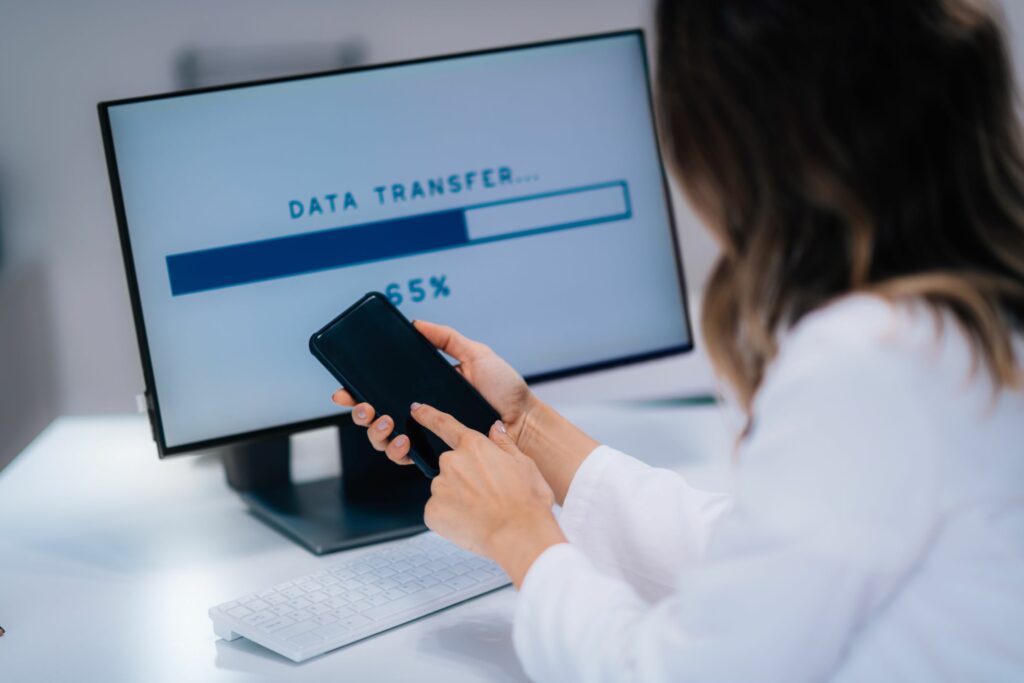
Data management and security are crucial technology areas in telesurgery, as the exchange of sensitive patient data is a necessary component of remote procedures. With the increasing use of robotic telesurgery, data management and security become especially important in terms of liability, compliance with regulations such as HIPAA, and as a data source for AI/ML to draw on.
One of the major players in the field of data management and security for telesurgery is Cerner. The company has developed a range of healthcare IT solutions, including its Millennium platform, which allows for the secure management and sharing of patient data. Cerner holds a number of patents related to its data management and security technologies, which help to protect its technology and maintain a competitive advantage.
Another major player in the field of data management and security for telesurgery is Athenahealth. The company has developed a cloud-based electronic health record (EHR) system, which allows for the secure management and sharing of patient data. Athenahealth holds a number of patents related to its data management and security technologies, which help to protect its technology and maintain a competitive advantage.
Other notable companies in the field of data management and security for telesurgery include Epic Systems, Allscripts, and McKesson. Each of these companies also holds a number of patents related to their data management and security technologies and uses them to enhance their value in the market.
In the field of telesurgery, data management and security becomes especially important as it relates to liability and compliance with regulations such as HIPAA. Additionally, the data collected during telesurgery can be used as a data source for AI/ML, to improve patient outcomes and the performance of the technology. Companies in this field should consider implementing robust data management and security protocols to ensure compliance and protect sensitive patient data.
In addition, patents and trade secrets will play a key role in the data management and security space for telesurgery. Patents can be used by data/security vendors to protect their innovations and maintain a competitive advantage. Trade secrets can be used to protect sensitive information such as algorithms, data encryption methods, and other proprietary technologies. For healthcare companies, having a robust patent and trade secret portfolio can be crucial to protect their sensitive patient data and ensure compliance with regulations.
Furthermore, healthcare companies should design their systems from the ground up with data management and security in mind, to ensure that they meet the necessary regulatory requirements and protect patient data. This can include implementing robust data encryption methods, using secure cloud storage solutions, and regular security audits to ensure compliance. By taking a proactive approach to data management and security, healthcare companies can mitigate potential liabilities and protect sensitive patient data, while also positioning themselves as leaders in the field of telesurgery.
Other Technologies of Import in Telesurgery
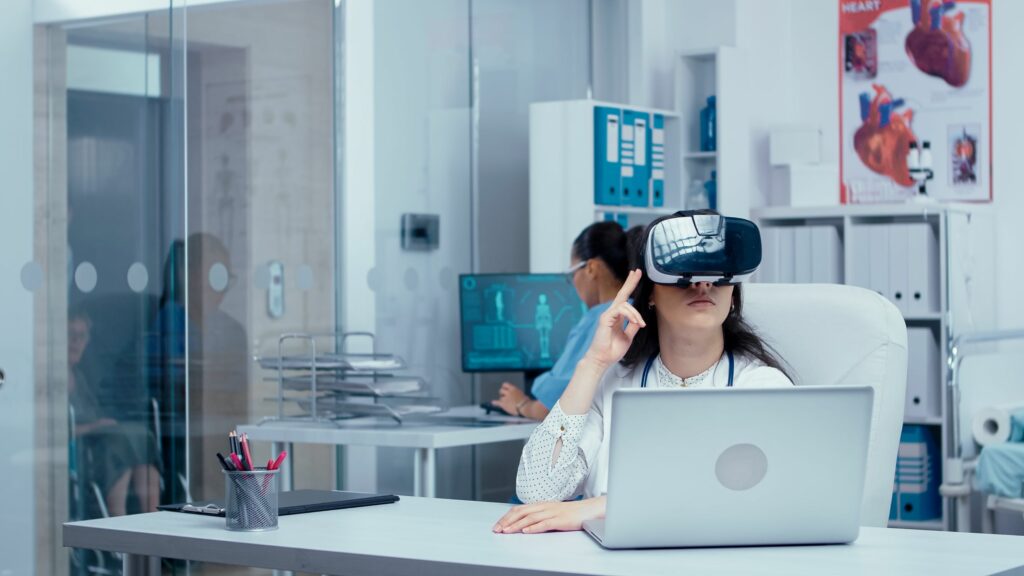
While the areas discussed in this post, Robotics, Communication technology, AI/ML, Data management and security are the major technology areas for telesurgery, there are many other specific technology areas that will play an increasingly large role in healthcare and telesurgery. Some of these areas include computer vision, human-machine interfaces, AR/VR, and many others.
Computer vision, for example, is a rapidly growing technology area in healthcare, and it has the potential to be used in telesurgery. Computer vision can be used to improve the accuracy of robotic surgical systems, as well as to provide surgeons with enhanced visualization during remote procedures. Additionally, computer vision can be used to analyze patient data and assist surgeons in making decisions.
Human-machine interfaces, such as haptic feedback, are another technology area that will play an increasingly large role in healthcare and telesurgery. Haptic feedback technology can be used to provide surgeons with a sense of touch during remote procedures, which can improve the precision and accuracy of surgeries.
AR/VR technology, can also be used to improve the visualization and communication during telesurgery. Surgeons can use AR/VR to visualize and interact with the patient’s anatomy in a more accurate and immersive way, which can improve the precision and accuracy of surgeries.
The developments in the underlying semiconductor technology and associated IP will also have a significant impact on telesurgery. Semiconductor technology provides the foundation for many of the devices and systems used in telesurgery, such as robotic surgical systems, communication devices and AI-powered systems. The rapid advancements in semiconductor technology, such as the integration of more advanced sensors, processors, and power management systems, will enable the development of more advanced and sophisticated telesurgery systems. Additionally, the IP associated with semiconductor technology can also provide a competitive advantage for companies that hold patents and proprietary technology in this area. This can include patents for new manufacturing methods, device designs, and circuit architectures that can be used to improve the performance of telesurgery systems. As the field of telesurgery continues to evolve, the developments in semiconductor technology and associated IP will play an increasingly important role in shaping the future of healthcare.
Overall, these specific technology areas, and many others, will play a crucial role in healthcare and telesurgery, and there will be a lot of IP filed in these areas as well. Companies and investors should be aware of these specific technology areas, and consider how they can use IP to protect their technology and maintain a competitive advantage in the field of telesurgery.
The Patents and IP That Will Make Or Break Telesurgery

As an IP expert consultant who has worked with many healthcare companies, it is clear that telesurgery is a field that is rapidly advancing and will have a significant impact on the future of healthcare. From a patent perspective, it is important for companies and investors in this field to consider the value, licensing, freedom to operate, and competition in the intellectual property space.
First, it is important for companies to consider the value of their patents. Patents can provide a significant competitive advantage and can be used to generate revenue through licensing or litigation. Companies should also consider their freedom to operate and ensure that their products and services do not infringe on any existing patents. This can be achieved through clearance searches and freedom to operate opinions.
In terms of licensing, companies should consider licensing their technology to other companies to generate revenue and expand their reach. This can also be a way to collaborate with other companies in the field and to improve the technology and the patient’s outcomes.
Finally, it is important for companies to be aware of the competition in the field of telesurgery and to be aware of the patents and technology that their competitors are developing. This can help companies to identify potential infringement issues and to develop their own patent strategies to stay ahead of the competition.
In conclusion, the field of telesurgery is rapidly advancing and is set to have a significant impact on the future of healthcare. Companies and investors in this field should consider the value, licensing, freedom to operate, and competition in the intellectual property space. It is crucial for companies to have a solid patent strategy in place to protect their technology and maintain a competitive advantage in this rapidly evolving field. If you are a company or an investor in this field, my suggestion is to seek professional guidance and conduct a comprehensive IP audit to understand the landscape and opportunities available in the telesurgery field.

